Dampness in the garage cellar can be constant, occur periodically depending on the season or weather conditions. If you have to dry the pit in the garage all the time, you need to resolve the issue drastically and immediately. There is no need to call specialists and pay them big money. With the right approach, everything can be done by hand.
Reasons for the accumulation of moisture in the cellar
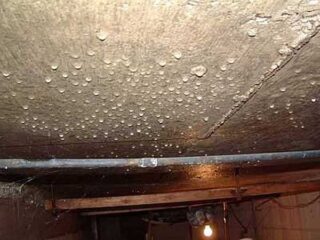
If moisture appears in the room and is constantly present, it is useless to waste time wiping floors, ceilings and walls. This will only give a temporary effect, and the situation will only get worse - first a fungus will appear, and then an unpleasant odor. To get rid of the dampness in the basement of the garage, you need to spend time and effort, find the cause and eliminate it. After that, moisture will not bother even in a particularly rainy summer and autumn.
Causes of dampness:
- Lack, improperly designed or clogged ventilation. The most commonly used supply and exhaust structure with natural air circulation. Usually, plastic pipes are laid, which are clogged with debris or condensate freezes in them in winter.
- The walls and floors were not insulated. The temperature difference contributes to the formation of condensation, puddles on the floor, drips on the walls.
- Incorrectly carried out waterproofing of the room. Water enters it through microscopic cracks in the concrete.
- The technology was followed, but the structure was damaged by heaving of the soil or due to the influence of other factors of a mechanical nature.
- High groundwater table. Particularly affected by this phenomenon are underground structures, the floor and walls of which are earthen or earthen.
Having identified the source of dampness, you can start choosing ways to eliminate it.
Optimal temperature and humidity conditions
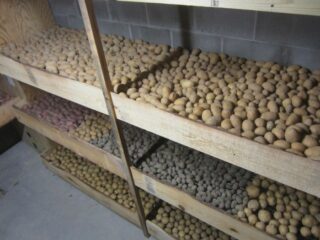
To make the cellar dry in the garage, you need to figure out the parameters of the final result, which corresponds to the standards for the maintenance of basements in garage blocks.
As a rule, a vegetable cellar is set up under the building, where vegetables, fruits and curls are stored. With an excess of moisture, the fruits become damp and disappear, and if the air is too dry, they dry out. Therefore, it is necessary to dry the subfloor taking into account these features.
The optimal indicators are:
- relative humidity - 85-93%;
- temperature - + 2-4 ° C.
Clay has a high thermal conductivity when wet and partially retains it when it dries. Sandy loam and sand do not retain water in themselves, as a result of which they practically do not conduct heat and cold.
Drying methods overview
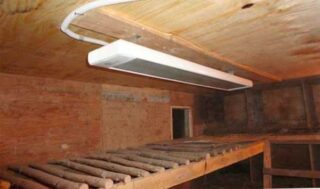
Before you dry the basement in the garage, you must eliminate the source of moisture in it. This is done after carrying out diagnostics and accurately establishing the causes of the problem. Depending on their nature, additional heat and waterproofing is done, penetrating solutions are used to seal the cracks, the blind area and ventilation are being repaired.
After the repair is over, you should remove the fungus and mold, take out and dispose of irrevocably damaged wood products. Everything that has survived must be dried and treated with a solution of lime.
After that, you can apply one of the following methods for drying the subfloor:
- Normal ventilation. This approach is only effective in warm, windy weather. It is necessary to open the gate, hatch and hold them like this until the dew drops.
- Install a powerful heater. This will increase your electricity bill, but the desired effect will be achieved quickly, cleanly and practically safely. The best option would be a heat gun, which can be rented for a few days.
- Large quantities of sorbents are brought into the room. It can be coal, lime, sawdust and even rock salt that is not needed in the household. The method is not the fastest, but it does not require significant efforts. The main thing is not to forget to change the sorbents.
- Potbelly stove or homemade brazier. The furnace creates a strong heat, as a result of which the structures are heated and the absorbed water evaporates from them. There is no need to be afraid of a fire, but great care must be taken with carbon monoxide.
- Paraffin candle or dry alcohol tablets. The candle is placed under the chimney and ignited. Due to the temperature difference, a strong draft arises, carrying out vapors and odors outside.
After finishing the drying of damp surfaces, it is advisable to treat the subfloor with a sulfur stick. This will help destroy pathogens and completely eliminate unpleasant odors.
Methods for waterproofing a burial pit
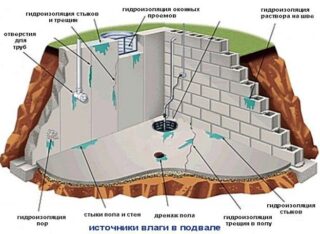
In order not to dry out the underground every month, you should initially take effective and efficient measures to prevent moisture from penetrating to it.
It makes sense to use one of the following technologies for passive dehumidification of the structure:
- External drainage. This method is possible if the garage is a stand-alone building that is not combined with a residential building and is not among the cooperative analogues. A ditch is dug around the perimeter, into which perforated pipes are inserted. The trench is filled with rubble and sand, and the pipes are led into wells located below the level of the garage foundation.
- Internal drainage. With this system, it is possible to quickly and effectively deal with dampness, even in pits with high groundwater levels. The essence of the method is that an annular collector is installed along the perimeter of the pit floor and is discharged into an external well, from where it is pumped out by a pump.
- Injection method. This method does not require the application of efforts, carrying out earthworks, but considerable funds are needed. They are required for the purchase of an expensive tool that penetrates into the mass of concrete or other material that makes up the walls and floors of the pit. It is introduced through the drilled holes and forms a waterproof layer after crystallization.
The choice is made individually both during construction and after a critical situation has arisen.
How to dry a basement after flooding

Most property owners have to deal with this phenomenon after melting snow or heavy prolonged rainfall. The problem is serious and you need to get rid of it as quickly as possible, since water has a destructive effect on the cellar, its contents, the foundation and the walls of the garage.
The first step is to remove the liquid from the pit. Considering that there may be several cubic meters of it, you should use the means of mechanization. Bucket scooping may take several days.
- Motor pump. You can rent it or contact the rescue service, which has such equipment. If the situation with flooding tends to occur regularly, it is advisable to buy the product and have it always at hand.
- Ilosos. Calling a sewer truck solves the problem of pumping out and at the same time disposing of dirty water, most likely infected with pathogens.
Having got rid of the water, you need to take out all the products, things and furniture that are there from the cellar.Based on their condition, a decision is made regarding recovery or disposal. Then you need to clean the room from the accumulated dirt. They are first cleaned off with a scraper, then with a brush, and finally wiped with a rag soaked in chlorine solution. Next, you need to assess the damage done to structures. If necessary, they are repaired, strengthened, and the ventilation ducts are cleaned.
After that, it remains only to dry the cellar in the garage. This should be done immediately, using all available means and opportunities.
Preventive measures
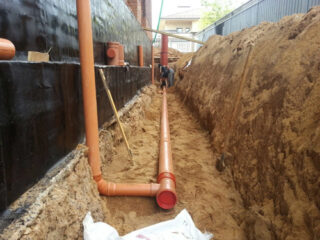
With the right approach to the arrangement of the underground in the garage block, you can forever forget about such phenomena as dampness, condensation and deluge. You need to start with an absolute waterproofing of the structure from groundwater. The solution to this issue is quick and relatively simple, but expensive can be done with the help of a penetrating polymer liquid.
The next stage will be the equipment of the drainage system for the removal of melt and storm water. Even in a cooperative environment, you can find a place to lay pipes and dig in a catchment well.
Finally, install an extractor hood with an electric fan. With constant operation, it will consume no more than 2 kW of energy per day, which is completely irrelevant.
To finally protect the subfloor from moisture, air dehumidifiers can be placed in the corners.








